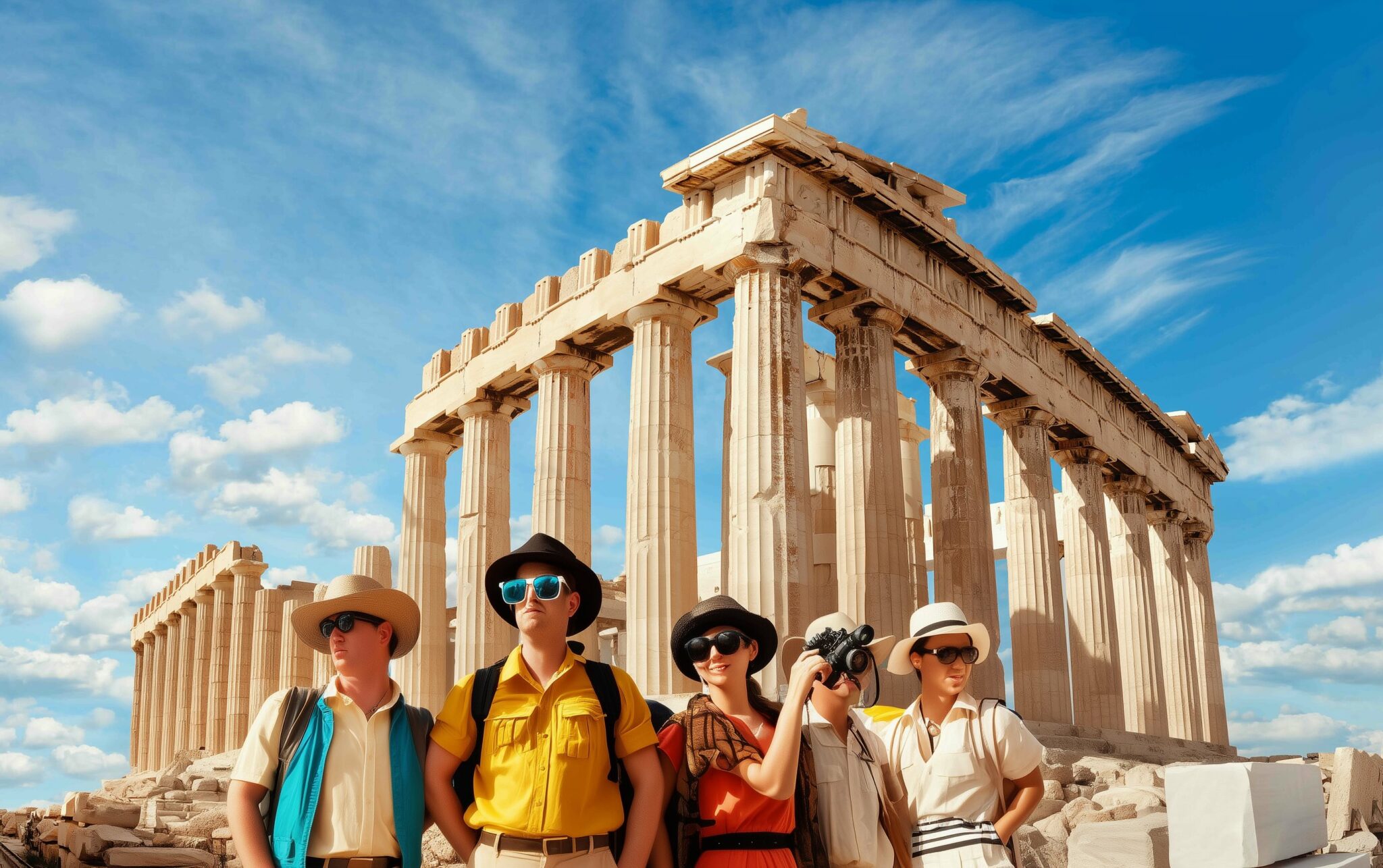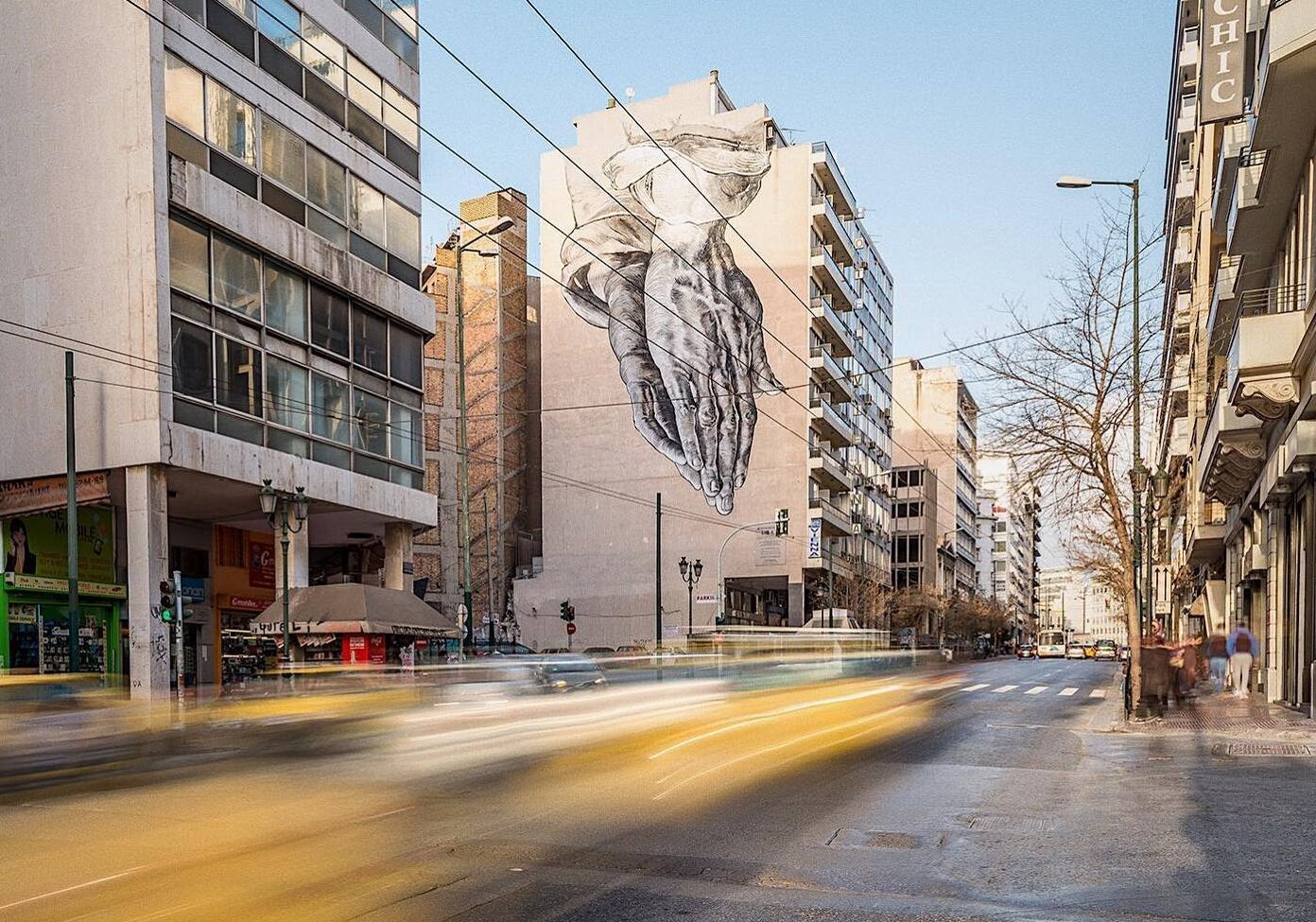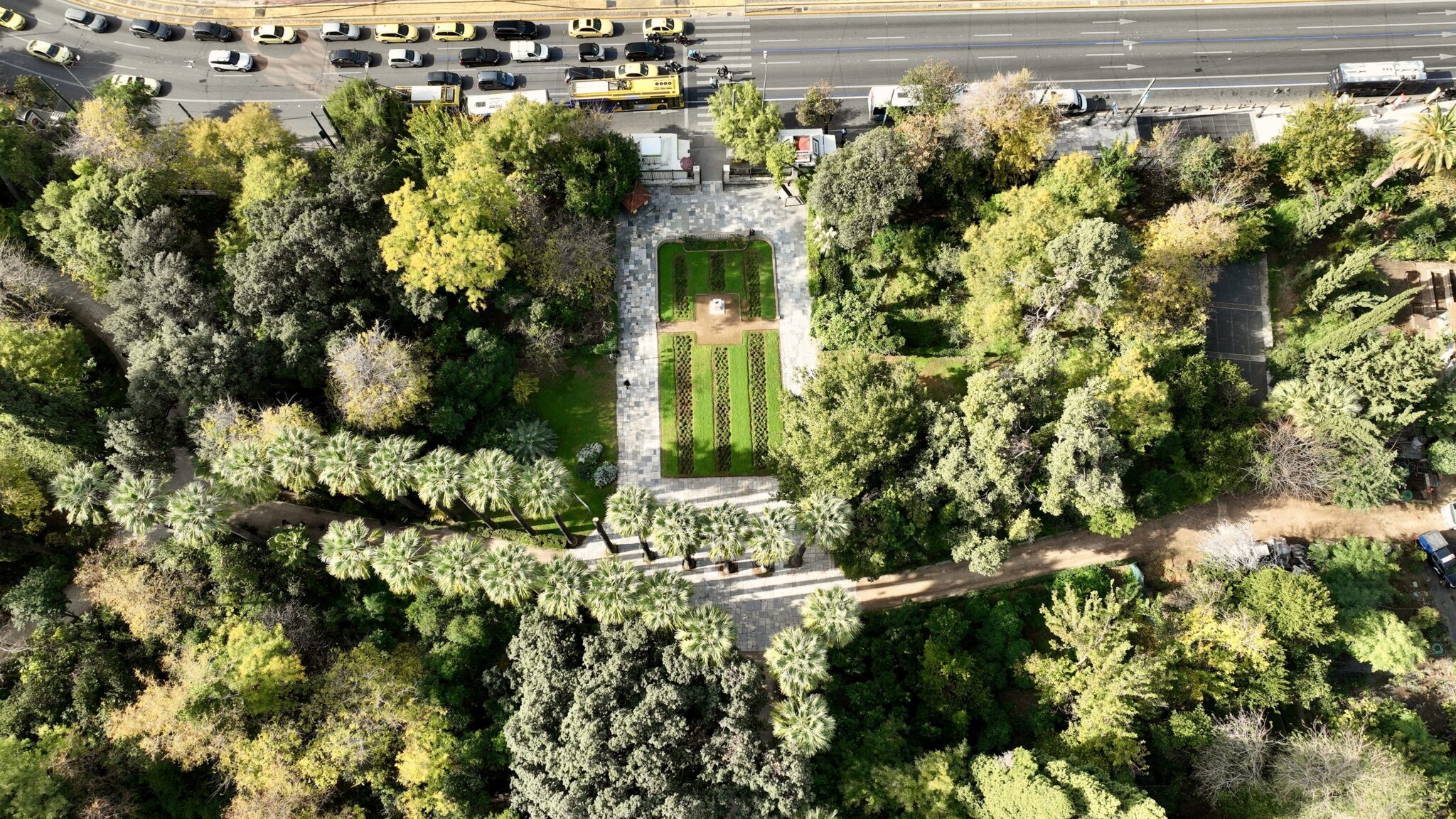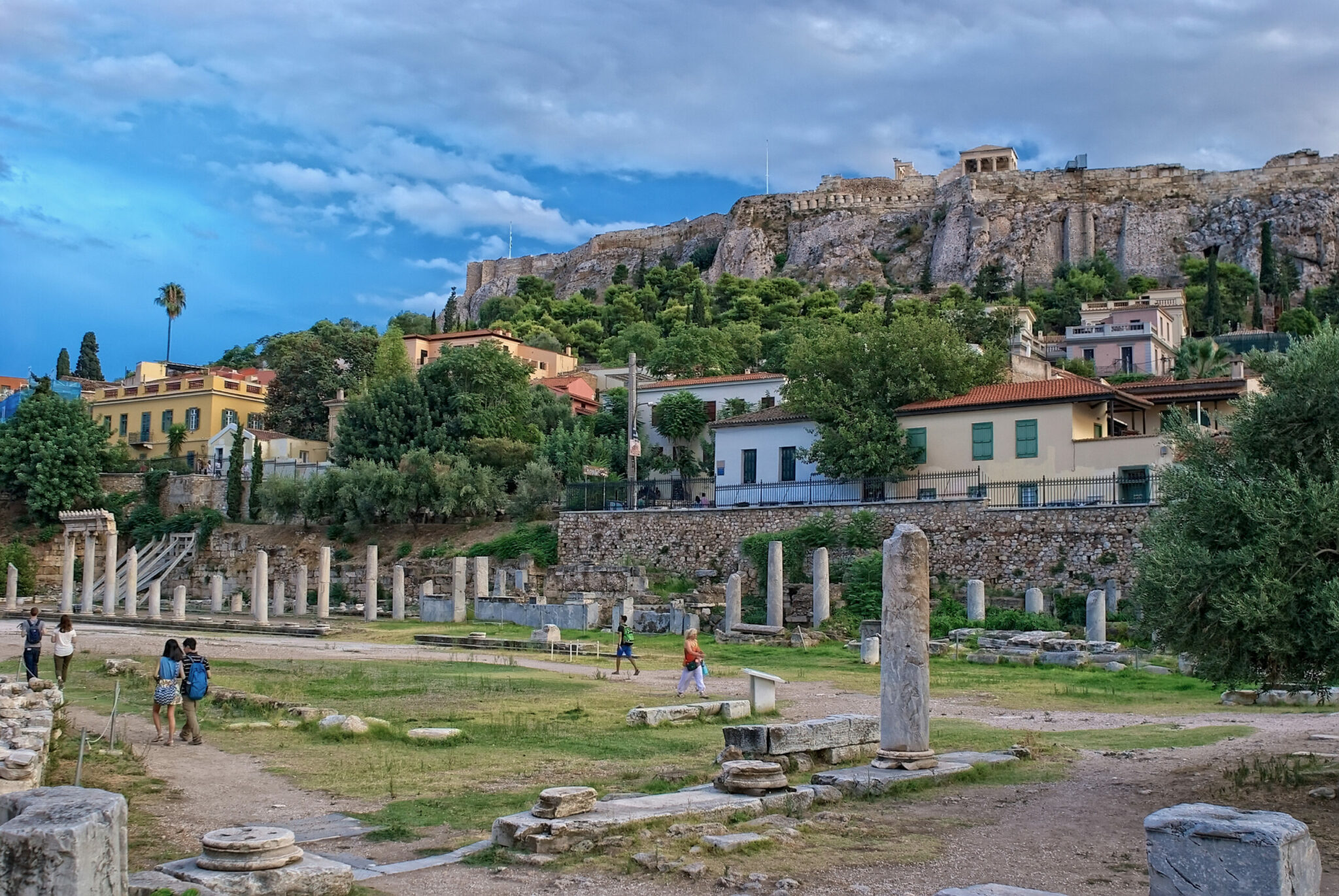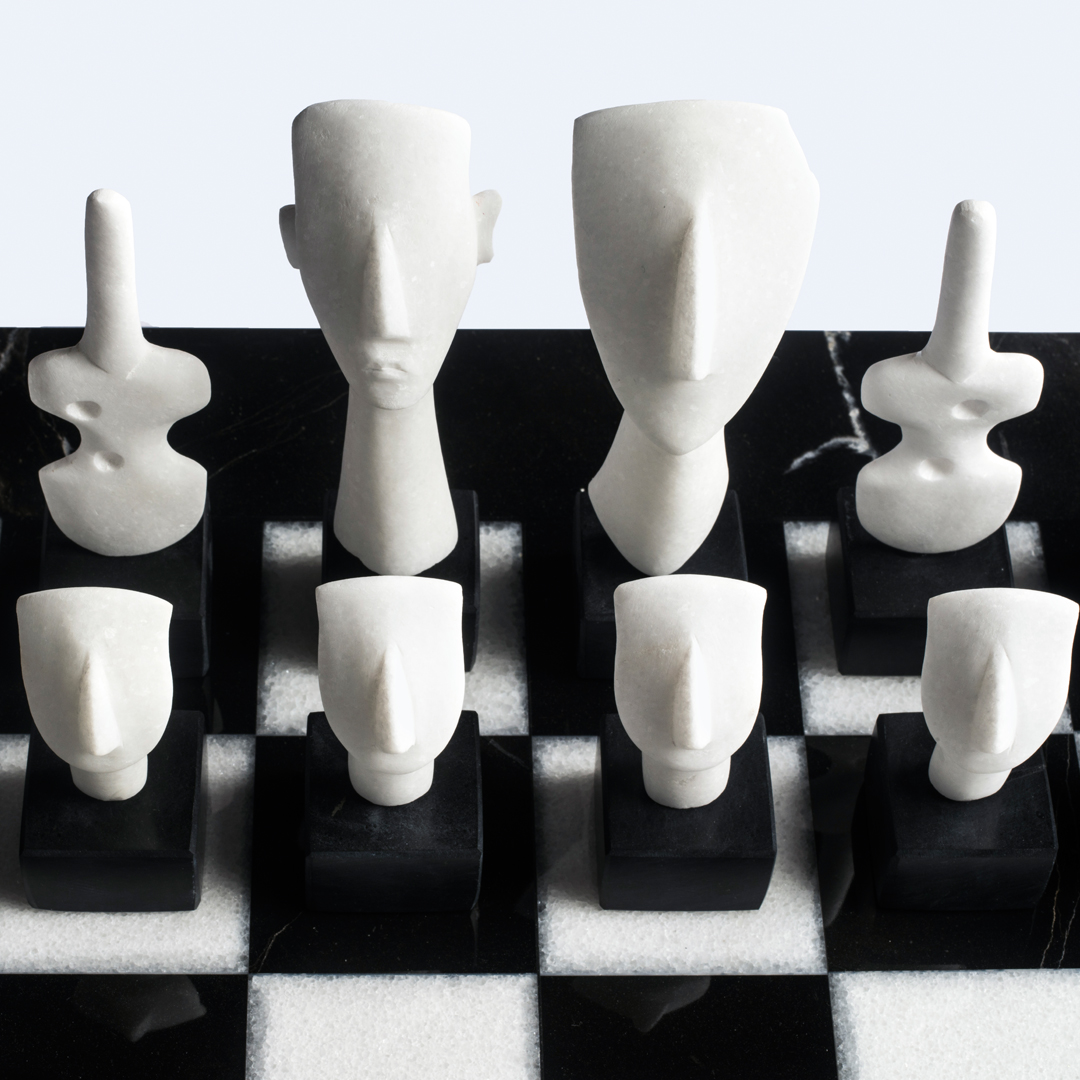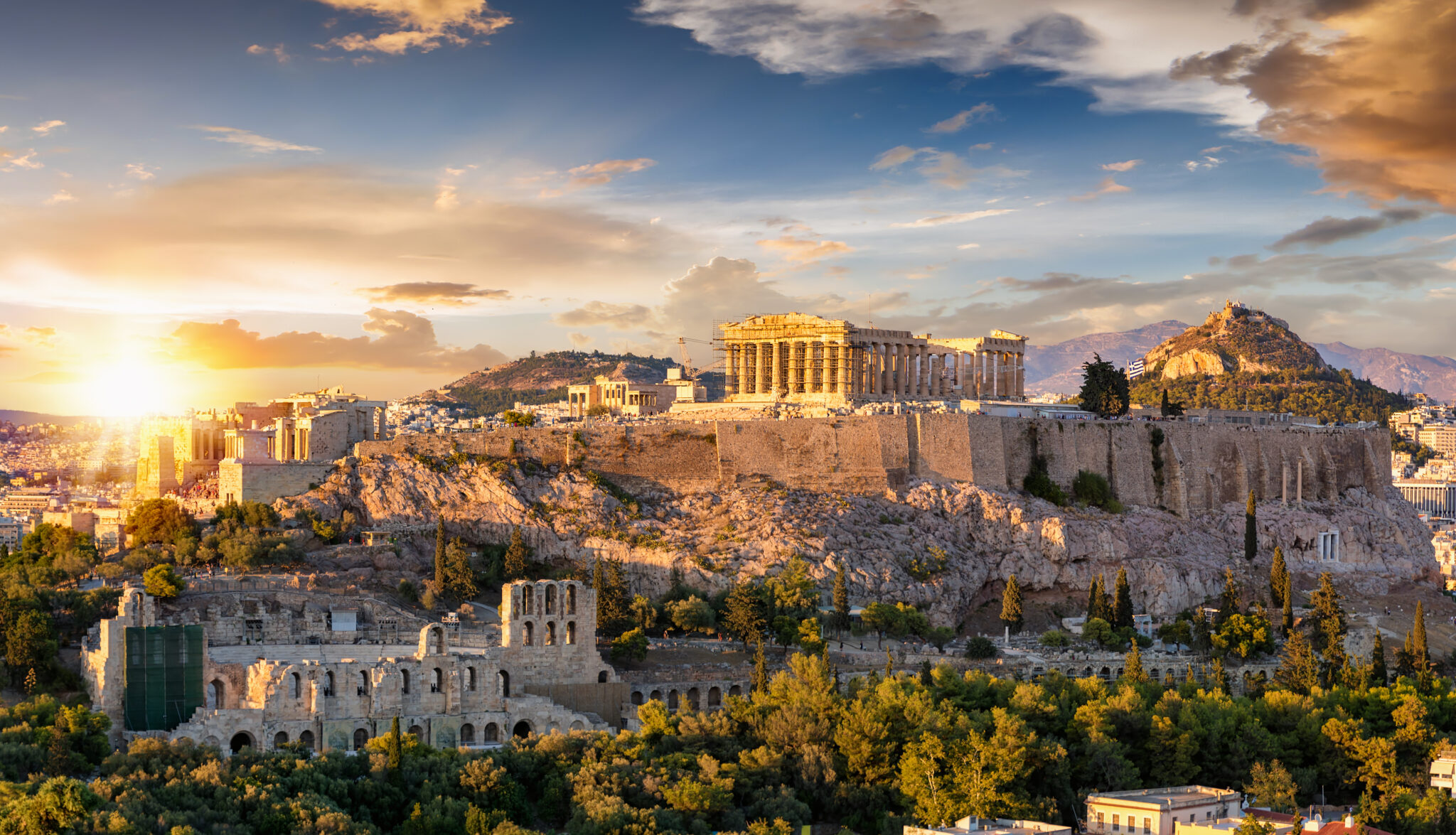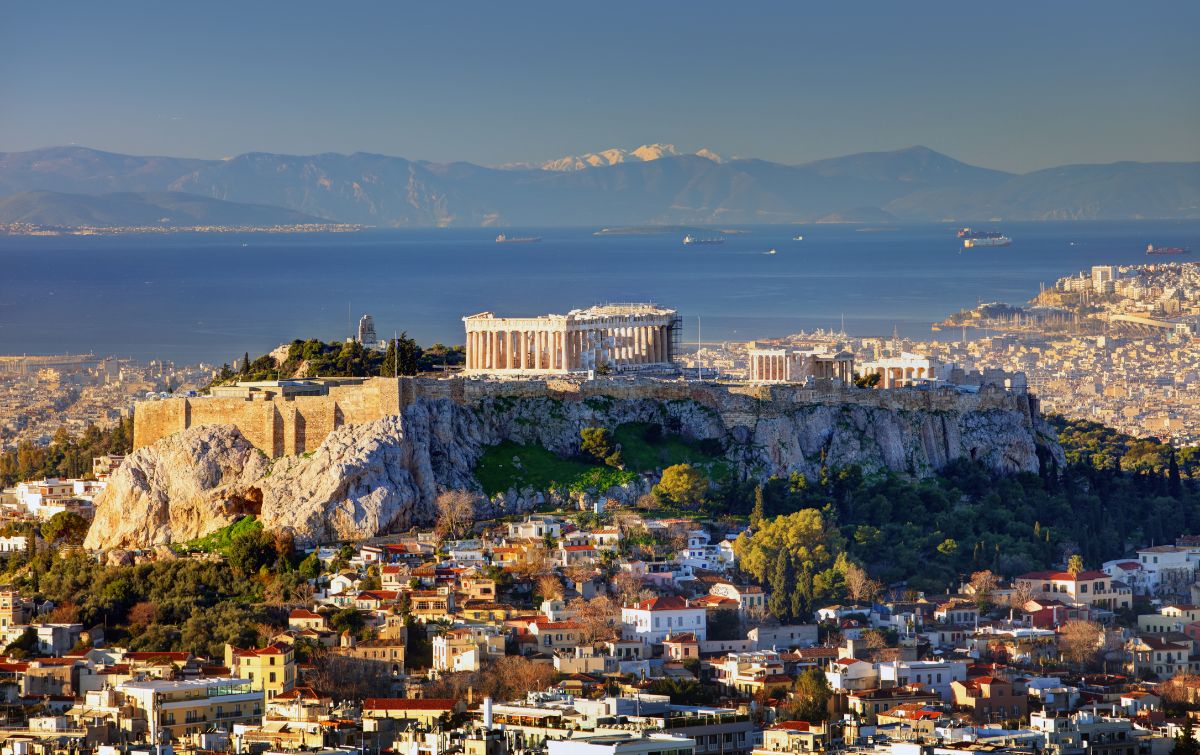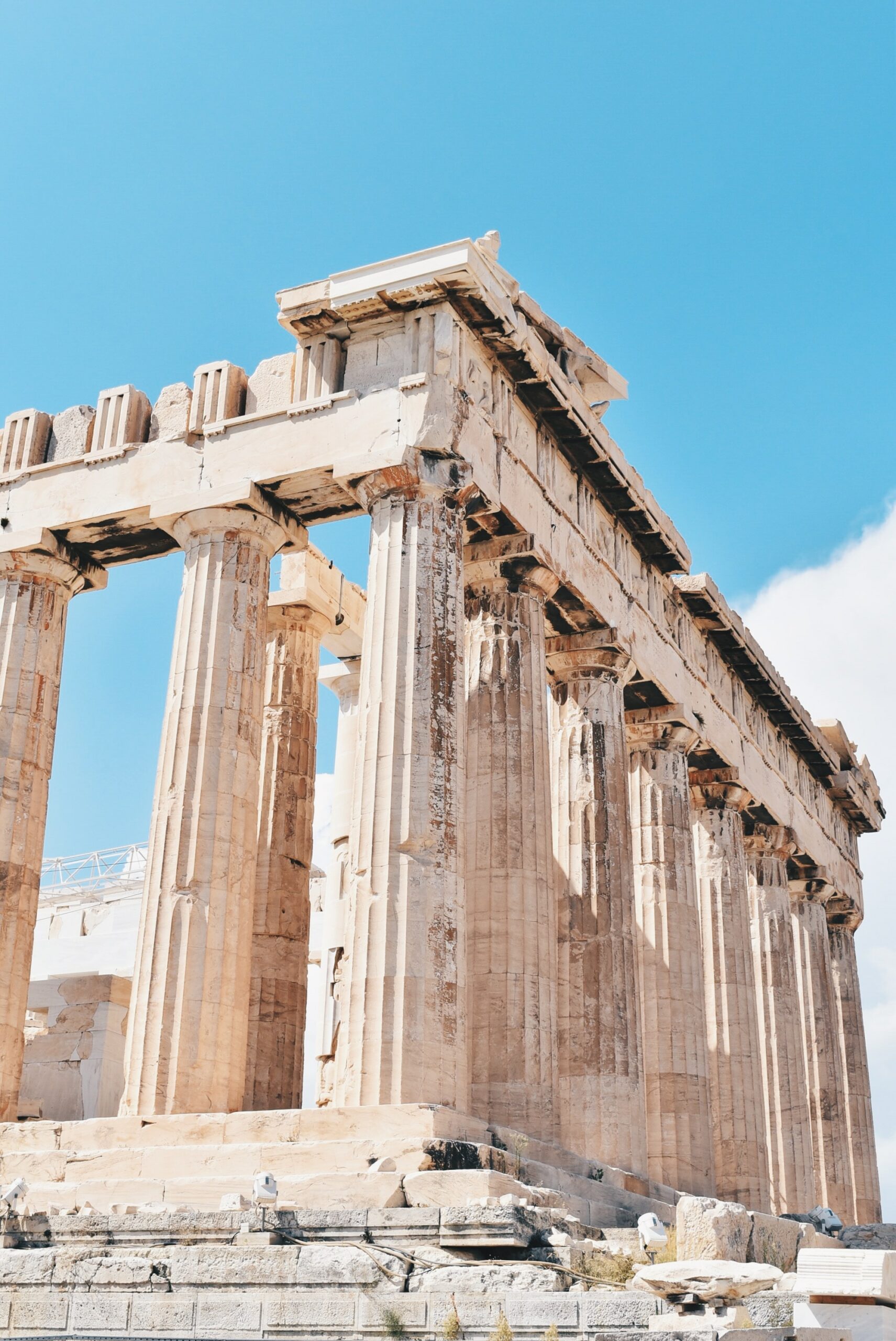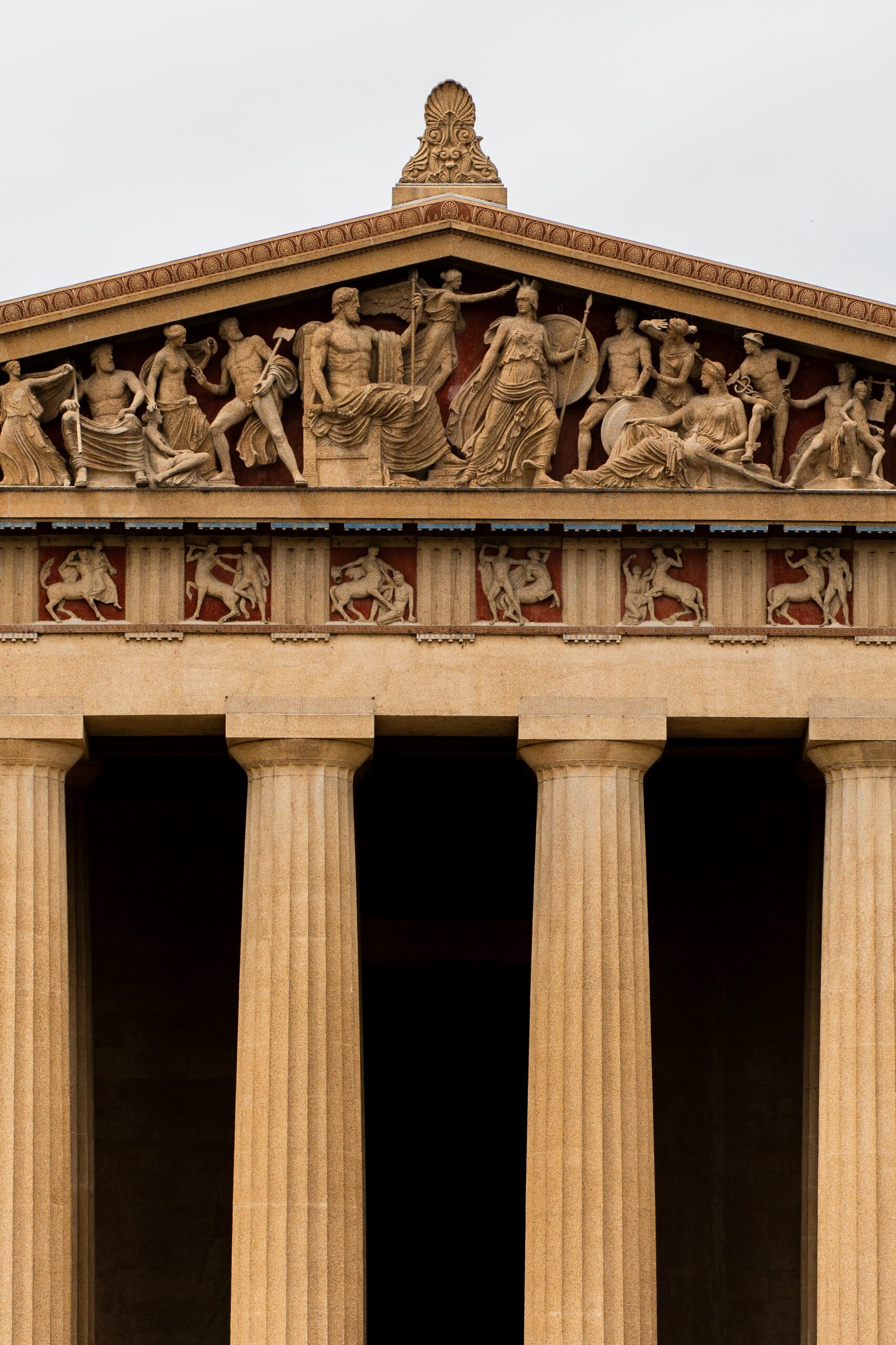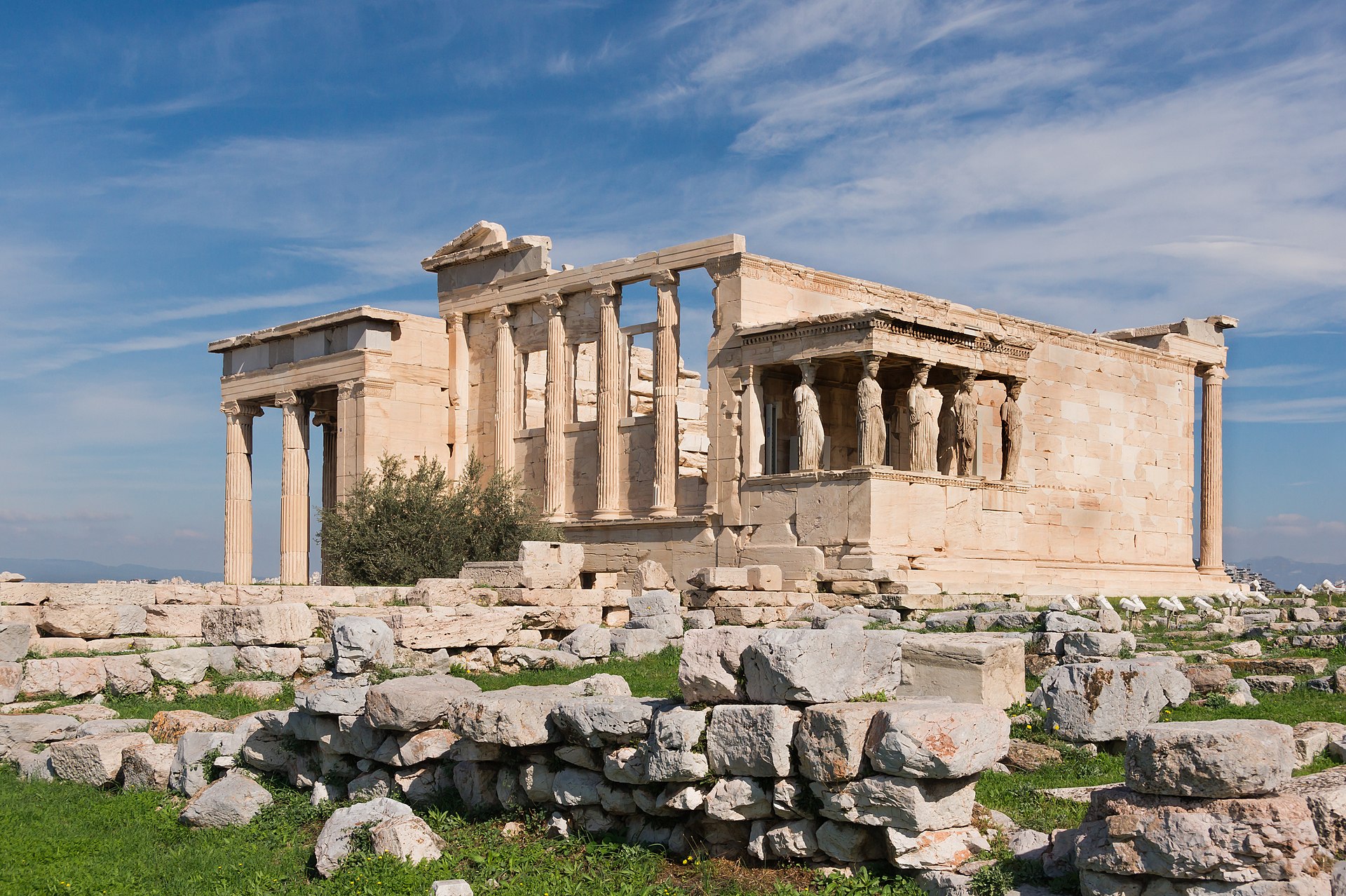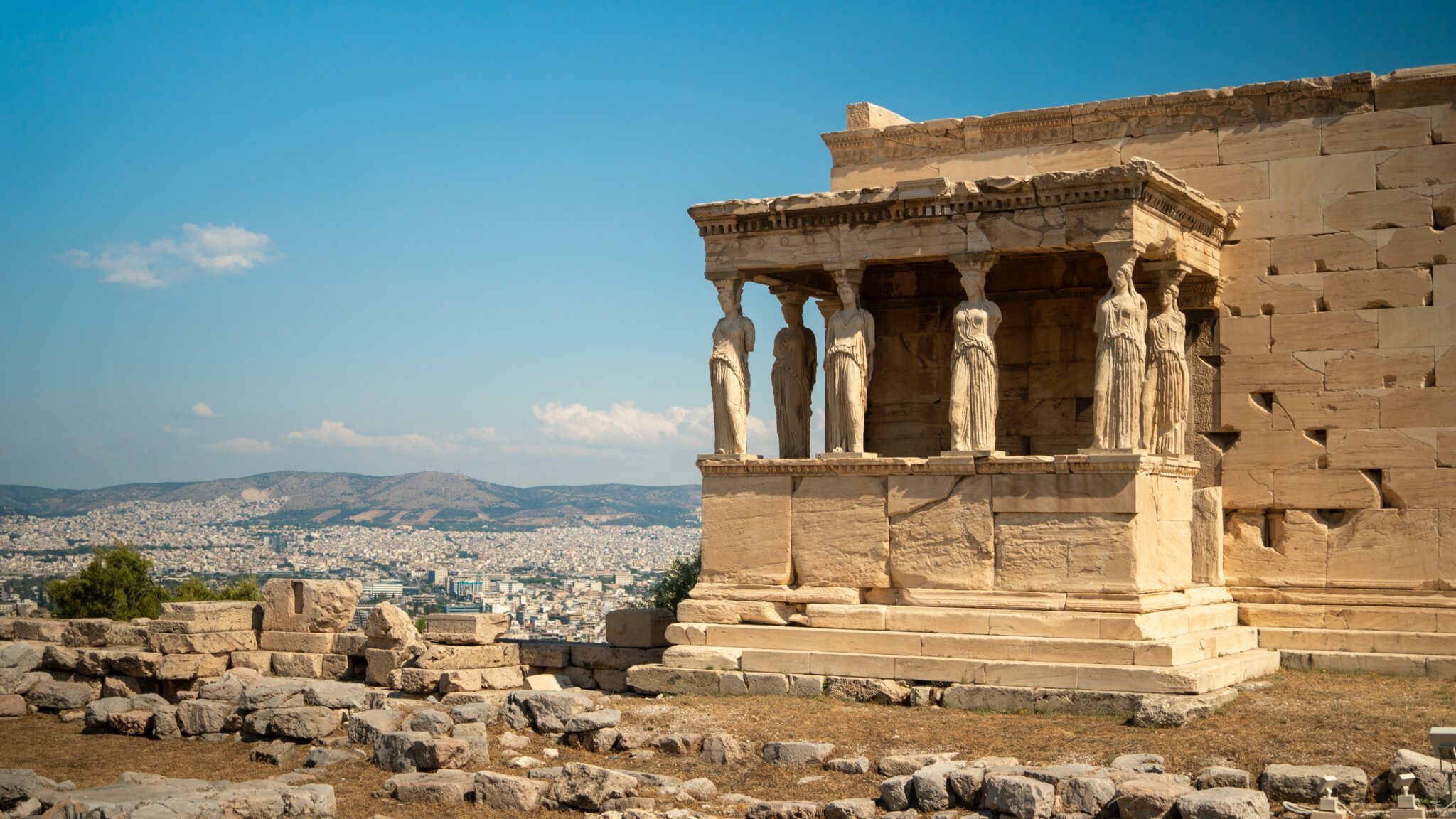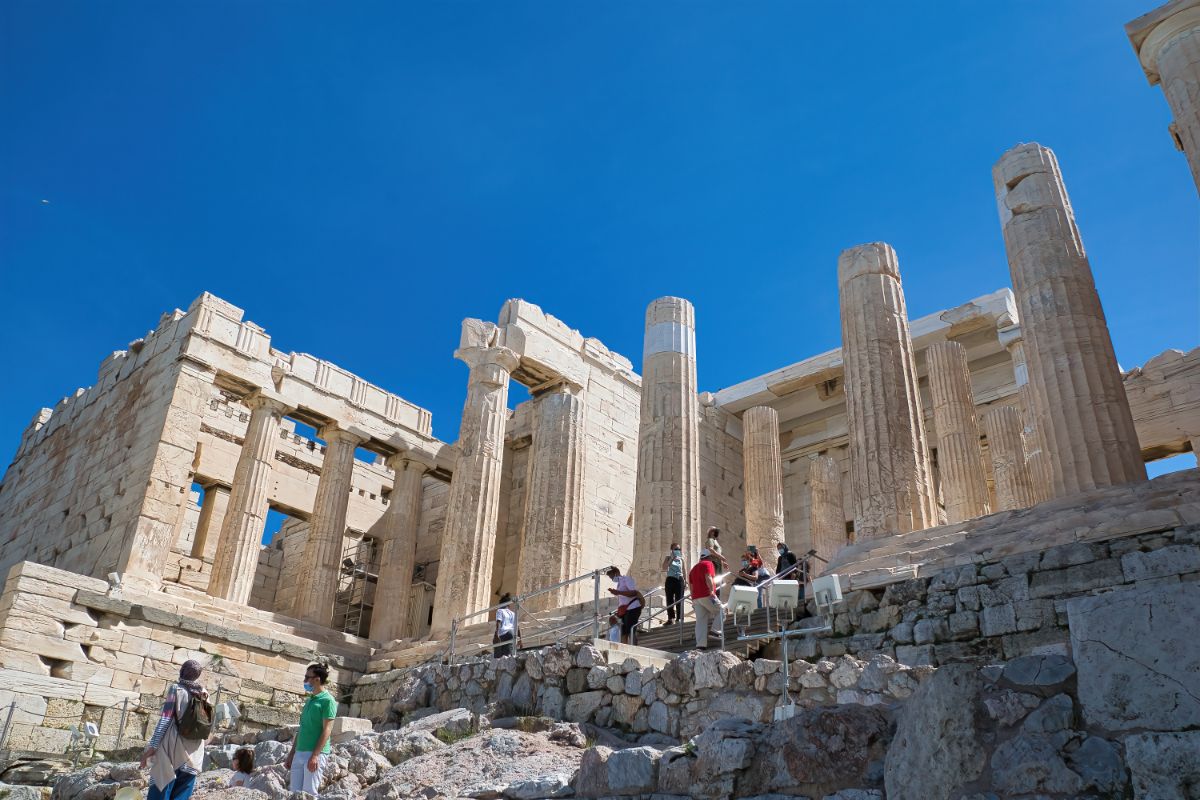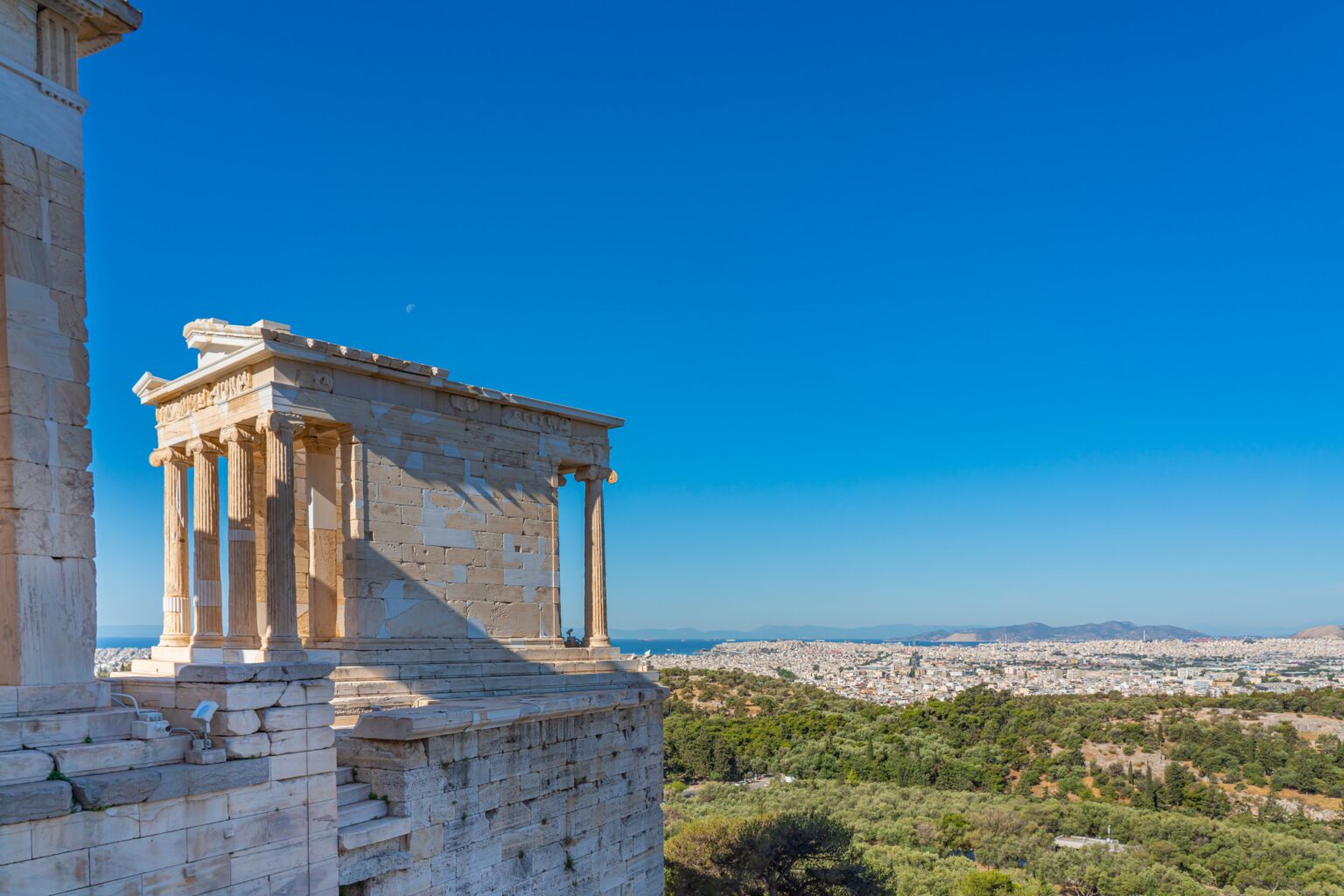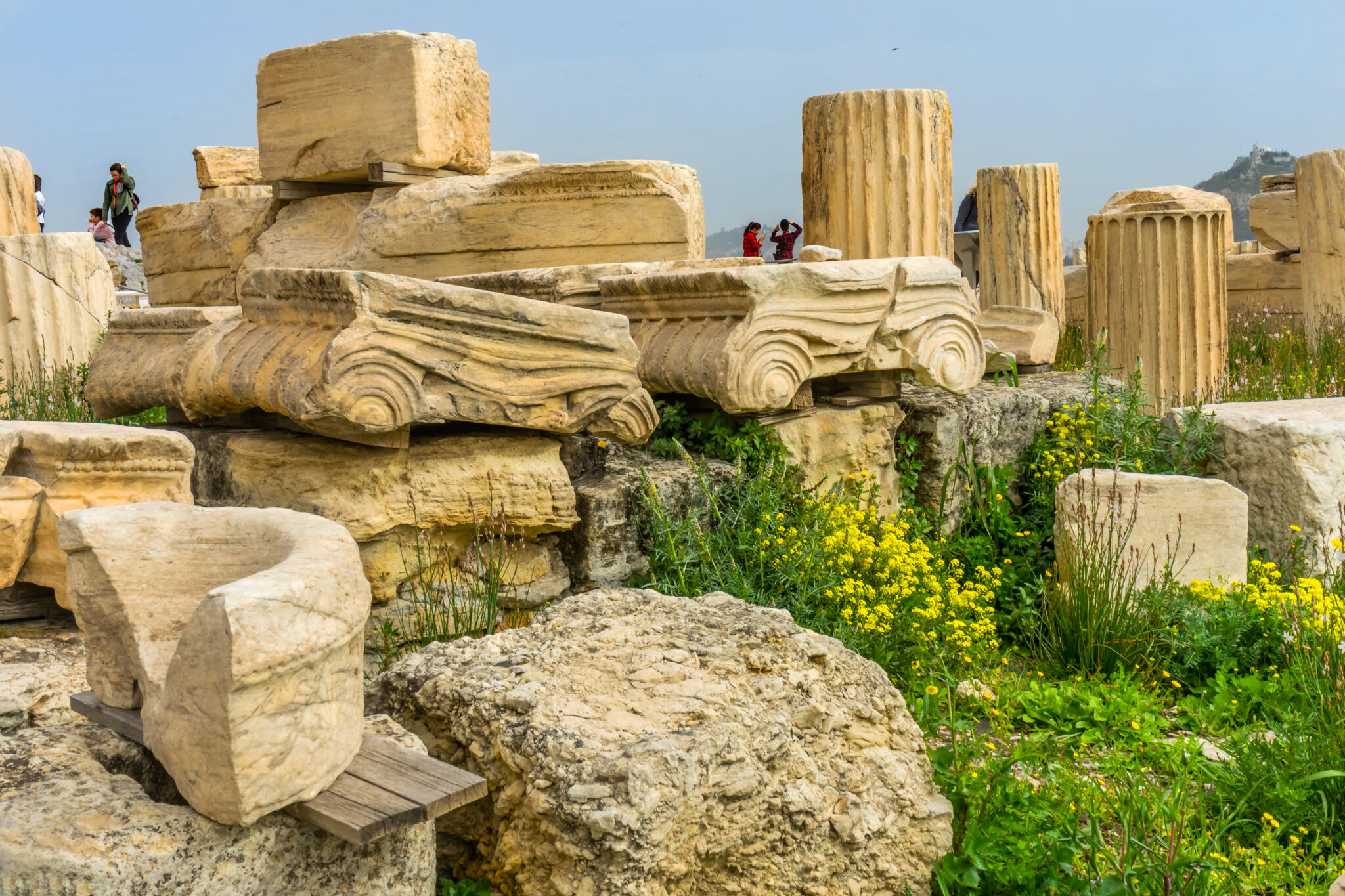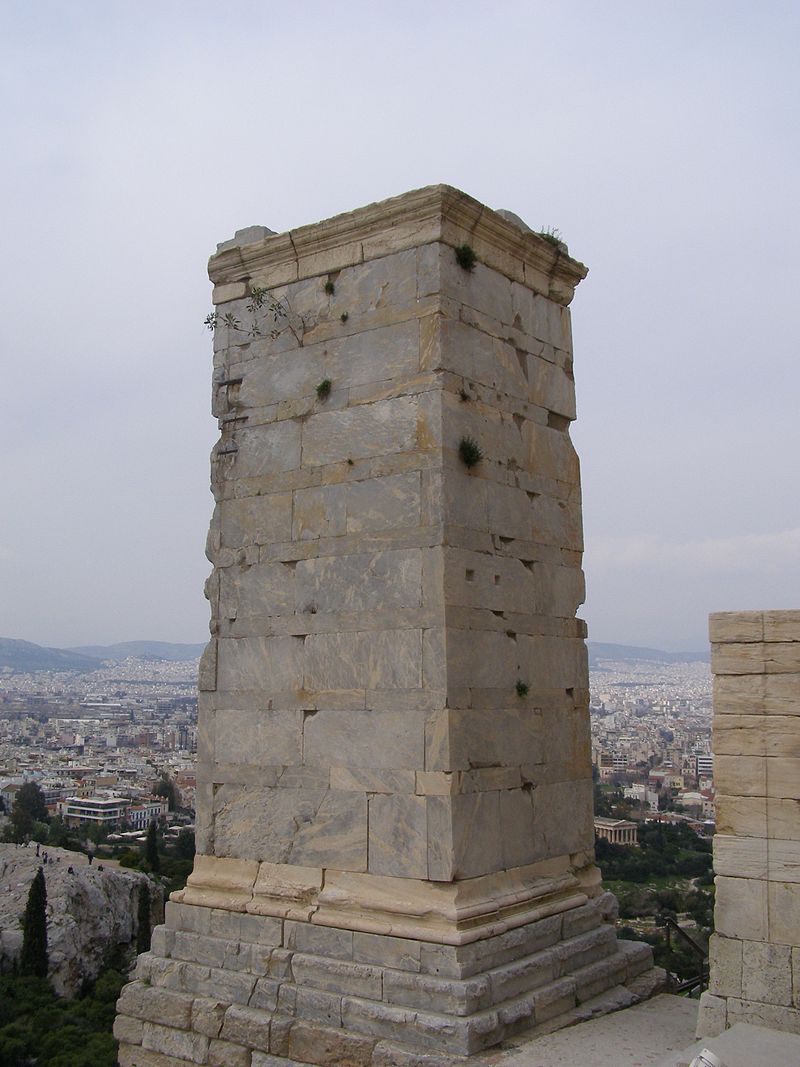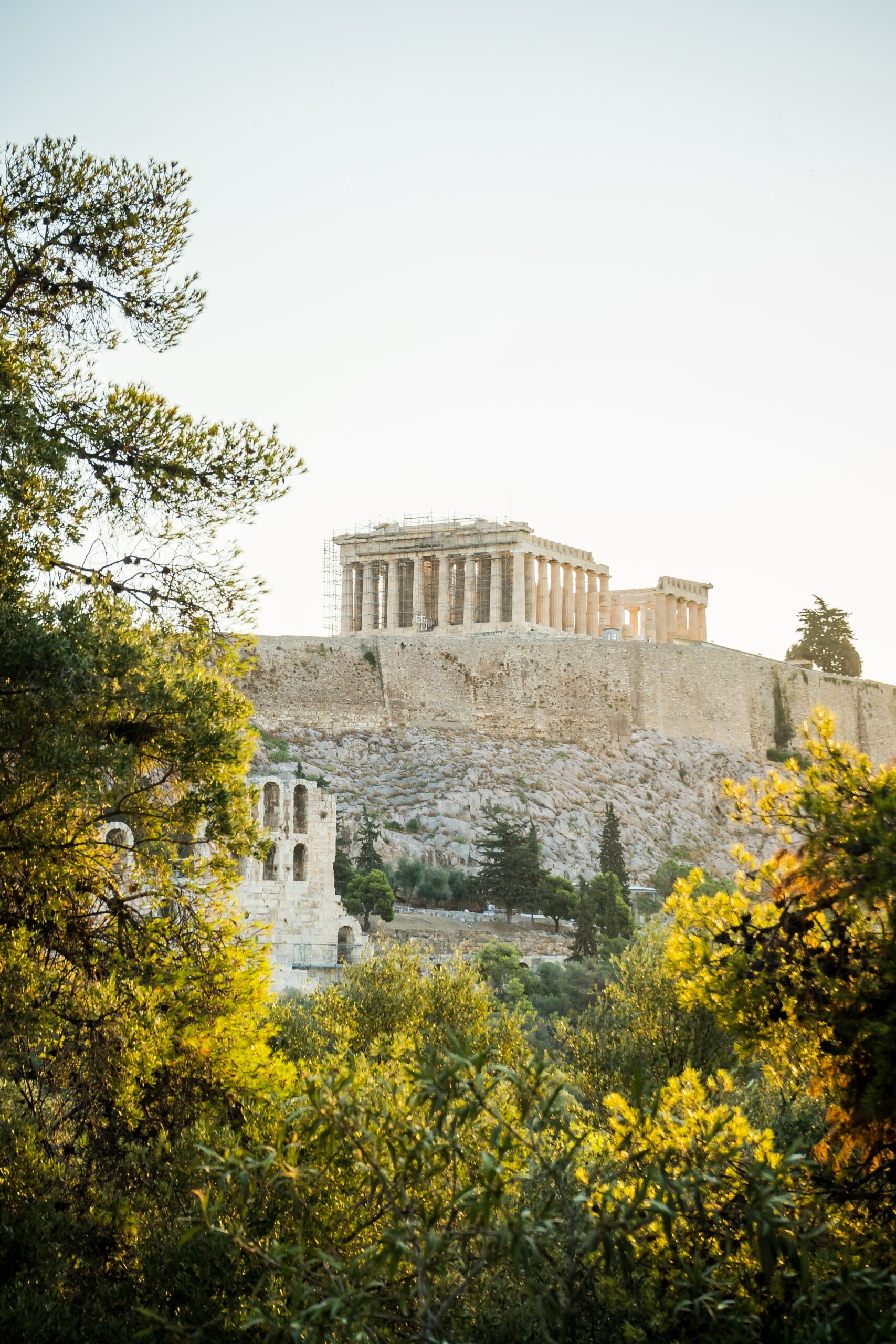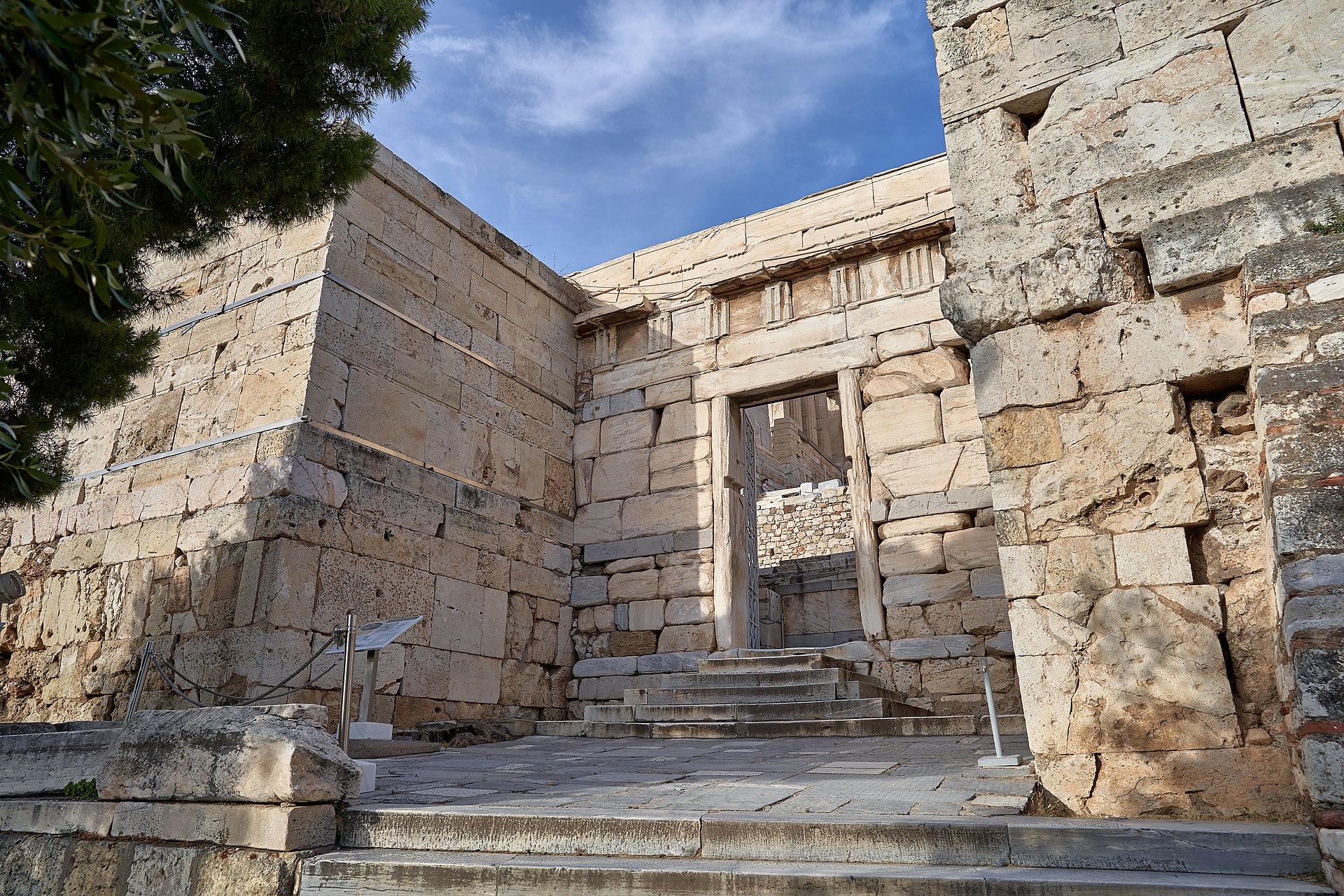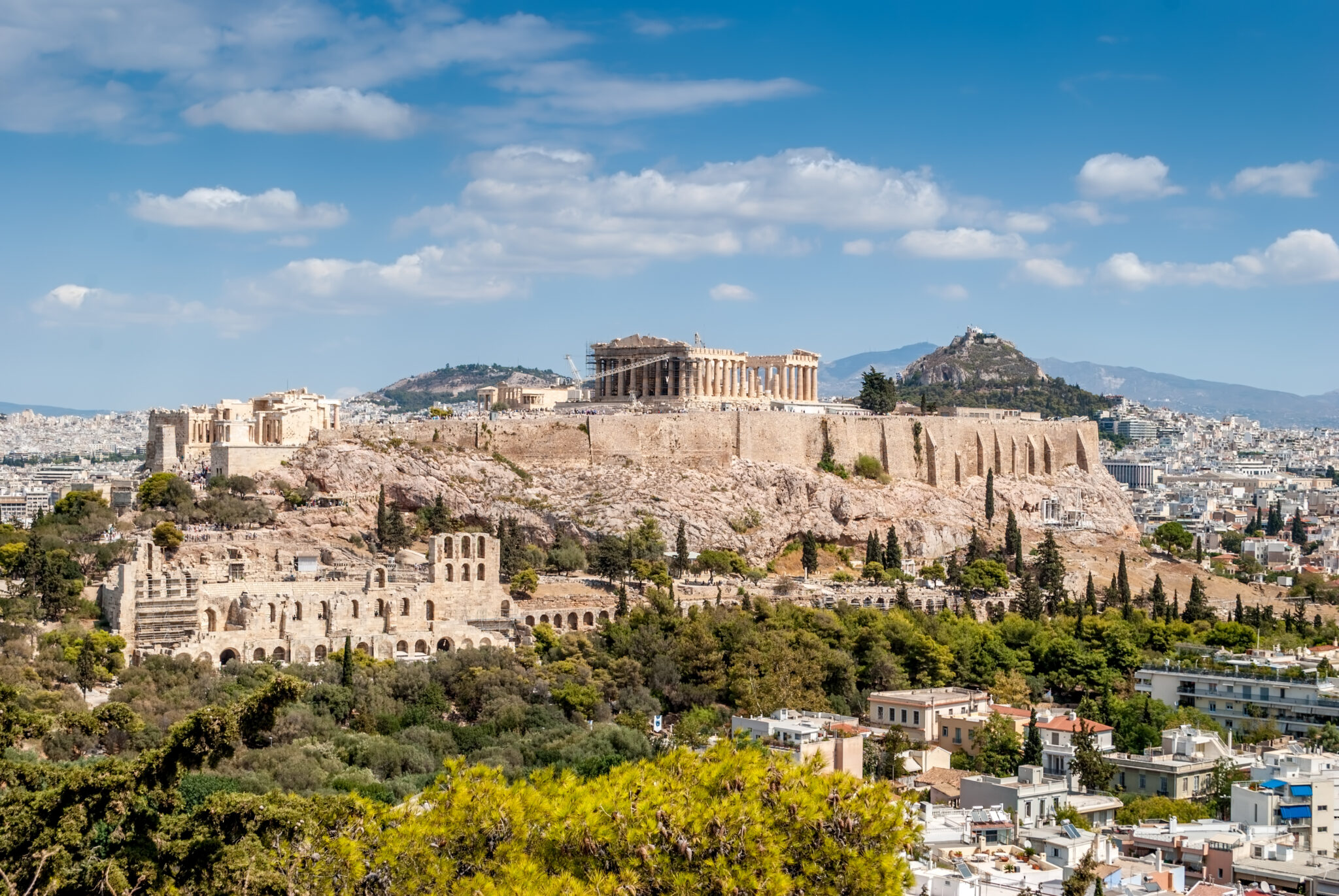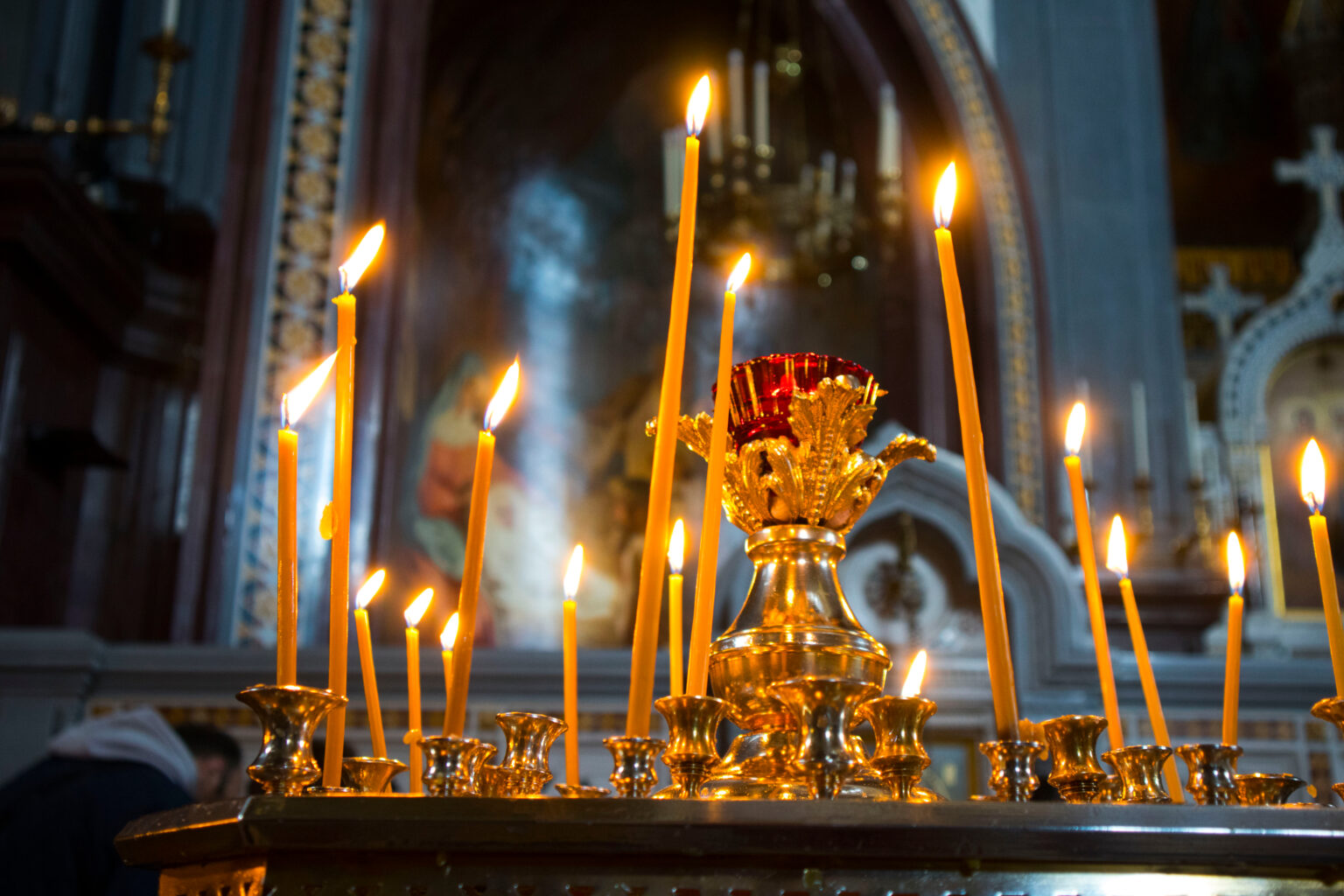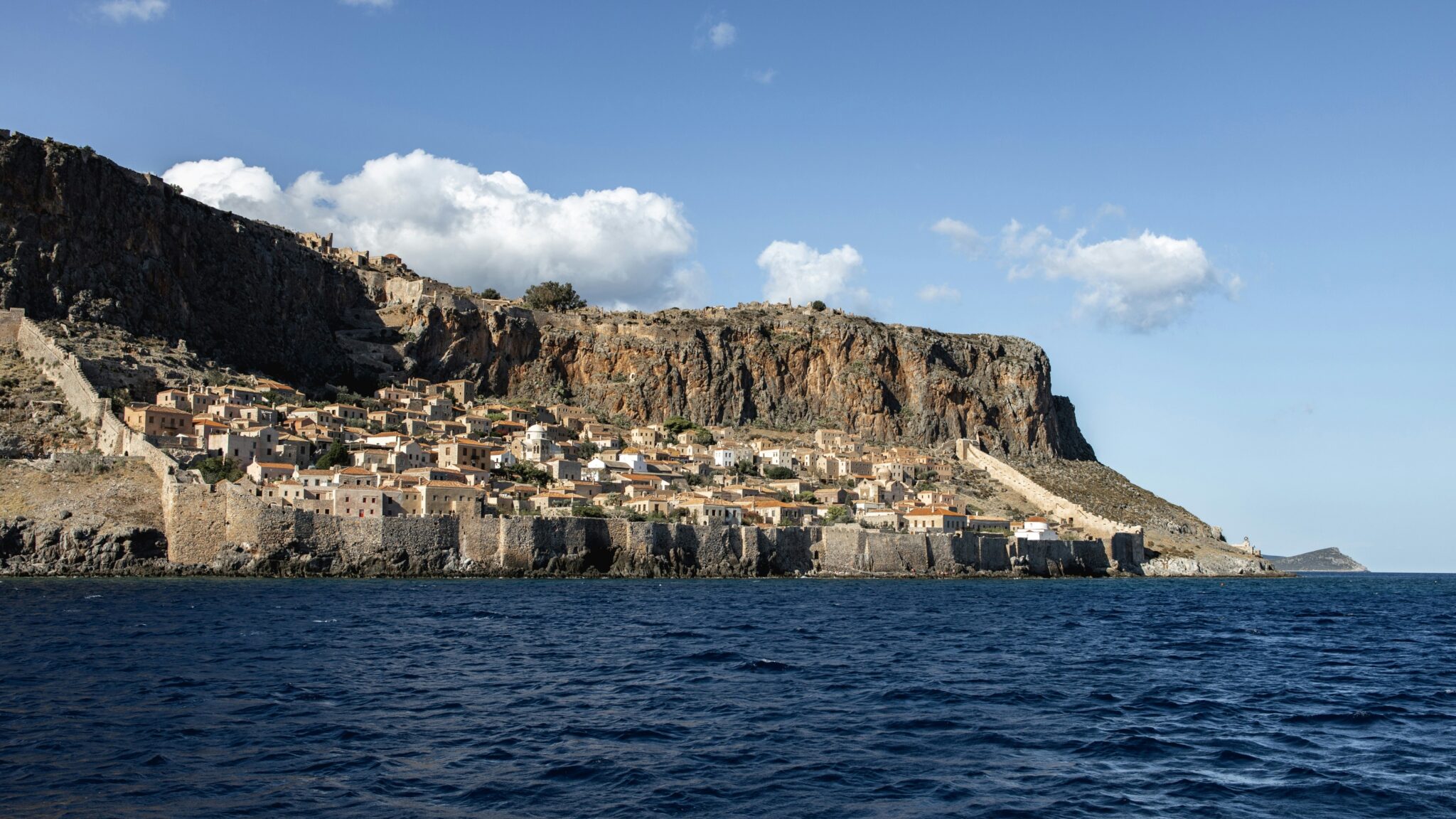With its rich history, religious festivals, and pivotal events, it captivates visitors from around the world. The Acropolis seamlessly integrates with the natural landscape, showcasing the innovative fusion of Classical art styles. This enduring influence reflects the grandeur and prosperity of Athens during its golden age under Pericles.
The story of the Athenian Acropolis begins in ancient times, with evidence of habitation dating back to the Neolithic and Bronze Ages. Fortifications were established in the thirteenth century BC, becoming a center of Mycenaean civilization. In the eighth century BC, the Acropolis transformed into a sacred precinct with the cult of Athena Polias. Monumental buildings like the “Old Temple” and the Hekatompedon were erected, emphasizing Athena’s importance. Devastation struck in 480 BC when the Persians invaded, but Athenians valiantly preserved surviving sculptures and fortified the Acropolis with new walls.
Under Pericles in the mid-fifth century BC, the Acropolis experienced a remarkable transformation. Iconic structures such as the Parthenon, Propylaia, Erechtheion, and temple of Athena Nike were constructed. These architectural marvels showcased Athenian brilliance and attracted skilled craftsmen. The temples on the north side were dedicated to Athenian and Olympian cults, while the southern part honored Athena in her various aspects.
After the Peloponnesian War, the Acropolis saw limited construction until the Roman period when a small temple dedicated to Augustus and Rome was built. Despite pillaging and damage, the Acropolis retained its prestige. In the third century AD, a new fortification wall was erected. Throughout the centuries, the Acropolis endured natural decay and repurposing. Restoration efforts began in the 19th century, continuing to this day.
Approaching the Acropolis, visitors witness its natural fortification from the west. Passing through the Beulé Gate or a small door under the temple of Athena Nike, they enter through the grand Propylaia, designed by architect Mnesikles. To the south, the temple of Athena Nike dominates the bastion, while remnants of the shrine of Aphrodite Pandemos remain nearby. Opposite the Propylaia, the pedestal of Agrippas, once holding an offering from Athens to Marcus Agrippas, stands.
Beyond the Propylaia lies the heart of the sanctuary. The awe-inspiring Parthenon, dedicated to Athena Parthenos, stands tall. Traces of the Brauronion and Chalkotheke can be found between the Parthenon and Propylaia. East of the Parthenon, a circular temple pays homage to Augustus and Rome. Remnants of the shrine of Zeus Polieus can be seen, and the modern museum occupies the site of a shrine to the hero Pandion. The Erechtheion, with its captivating porch of the Karyatides, stands on the north side. The foundations of the “Old Temple” and the Arrhephorion, the dwelling place of the Arrhephoroi, can also be discovered.
The Acropolis accommodated various cults, with caves on the northern slope used as shrines. A ‘Peripatos’ path encircled the crag, leading to numerous shrines and significant monuments on the south slope.
The Parthenon
It stands as an architectural masterpiece dedicated to Athena Parthenos, the revered patron goddess of Athens. This extraordinary temple, a symbol of Athenian democracy at its pinnacle, was constructed between 447 and 438 BC as part of the ambitious Periclean building project. It replaced earlier temples, destroyed by the Persians, and became the epitome of grandeur and artistic achievement on the Acropolis.
Architects Iktinos and Kallikrates ingeniously designed the Parthenon, while the acclaimed sculptor Pheidias oversaw its construction and the creation of its sculptural adornments, including the magnificent chryselephantine statue of Athena. The temple’s unique blend of Doric architecture and innovative elements sets it apart as a true marvel.
With its double peripteral design, the Parthenon boasts a pronaos, cella, and opisthodomos, all surrounded by a pteron featuring an impressive array of columns. The architects skillfully utilized the materials originally prepared for the earlier temple, ensuring the temple’s grandeur while employing clever techniques to accommodate its expanded dimensions. Inside the cella, a double pi-shaped colonnade provided a stunning backdrop for the awe-inspiring gold and ivory statue of Athena Parthenos, holding Nike, the goddess of Victory, in her right hand.
The Parthenon’s exterior is equally breathtaking. Its two-sloped wooden roof, adorned with marble tiles, showcased palmette-shaped false antefixes along the edge, exuding an air of elegance and sophistication. Marble statues graced the corners of the pediments, while ornate palmettes adorned their apex. These pediments, with their intricate sculptural compositions, vividly brought to life the tales and legends surrounding the goddess Athena. The metopes, positioned above the outer colonnade, depicted captivating reliefs depicting legendary battles, such as the Gigantomachy, Trojan War, Amazonomachy, and Centauromachy.
The temple’s frieze, a remarkable element of the Ionic order, adorned the top of the cella, pronaos, and opisthodomos. This artistic masterpiece depicted the grand procession of the Panathinaia, the most significant festival in honor of Athena, symbolizing the vibrancy and splendor of ancient Athens.
Throughout history, the Parthenon underwent transformations and suffered damage. It served as a church, a mosque, and a military stronghold, each phase leaving its mark. Devastation struck during the Venetian siege in 1687, causing significant destruction. The temple also faced challenges during the early 19th century when Lord Elgin looted much of its sculptural decoration, which now resides in the British Museum. However, dedicated restoration efforts have been undertaken to preserve and conserve this architectural wonder. Ongoing restoration projects, initiated in 1896-1900 and again in 1922-1933, continue to safeguard the Parthenon’s legacy under the supervision of the Committee for the Conservation of the Monuments of the Acropolis.
The Erechtheion
An exquisite temple situated on the northern side of the Acropolis, holds its own allure and historical significance. Erected between 421 and 406 BC, it replaced an earlier temple dedicated to Athena Polias, known as the “Old temple.” This elegant structure derived its name from Erechtheus, the legendary king of Athens, whose worship took place within its sacred confines. The temple’s design was influenced by the irregular terrain and its purpose of accommodating multiple cults.
Crafted from Pentelic marble, the Erechtheion featured an impressive Ionic portico with six columns on its east side, sheltering the entrance to the eastern section. Inside, the cult statue of Athena, made of olive wood, stood as a revered symbol, adorned with the sacred peplos by the Arrhephoroi during the Panathenaic festival. The temple’s western section served the cult of Poseidon-Erechtheus, housing altars dedicated to Hephaestus and Voutos, brother of Erechtheus. It was believed that Athena’s sacred snake resided within this part of the temple. Another noteworthy feature was the entrance on the north side, adorned with a pi-shaped propylon, characterized by four Ionic columns along the facade and an intriguing stone paving said to bear the marks of Poseidon’s trident.
Further enchantment awaited visitors on the south facade, where the porch of the Karyatides captivated all who beheld it. This pi-shaped structure replaced traditional columns with six female statues, known as the Karyatides, who supported the roof. Created by Alkamemes or Kallimachos, these statues paid homage to the young women from Karyes of Lakonia, known for their dances in honor of the goddess Artemis. While the original statues are now housed in museums, replicas grace the Erechtheion.
Throughout its history, the Erechtheion endured various transformations and underwent damage. It was converted into a church dedicated to Theometor during the Early Christian period. Under different occupations, it served as a palace and a residence for Turkish commanders. Lord Elgin’s activities during the early 19th century further impacted the temple. However, a concerted effort to restore and preserve the Erechtheion has taken place.
Its restoration received recognition through the Europa Nostra award. Restoration work has been ongoing since the late 20th century, with the Erechtheion becoming the first monument of the Acropolis to undergo restoration as part of the comprehensive conservation and restoration project initiated by the Restoration Service of the Monuments of the Acropolis and the Committee for the Conservation of the Monuments of the Acropolis.
The Propylaia
Erected on the site of the Mycenaean fortification gate, the Propylaia represents a significant chapter of ancient Greek history. Its first version was built under Peisistratos in the mid-sixth century BC. The structure we admire today was crafted by architect Mnesikles between 437-432 BC as part of the Periklean building program. Composed of Pentelic marble, the pi-shaped edifice frames the entrance to the sacred precinct, with both outer and inner facades supported by Doric columns. Also serving as a cultural hub, the northern wing housed the Pinakotheke, an esteemed art gallery. The Propylaia underwent transformations over the centuries, serving as churches, residences, and even a garrison. Post the Greek War of Independence, significant restoration work has been undertaken to preserve this emblem of ancient Greece.
The Temple of Athena Nike
Perched at the Acropolis’ southeast edge, the Temple of Athena Nike stands as a beacon of classical design. Crafted by architect Kallikrates from 426-421 BC, it replaces earlier temples dedicated to Athena Nike, traces of which are preserved beneath its floor. Showcasing an Ionic amphiprostyle design, the temple features a unique frieze depicting Greek-Persian battle scenes and Olympian gods. Despite being repurposed into a Byzantine church and an Ottoman munitions store, the temple underwent careful reconstruction in the late 19th century. Today, ongoing restoration efforts continue to safeguard its historical and artistic value, serving as a testament to the classical age’s enduring legacy.
The Brauronion
Nestled within the sacred confines of the Acropolis, the Brauronion serves as a shrine to Brauronian Artemis, the protector of birthing women. This sanctuary, probably founded by Peisistratos, echoes the design of its larger counterpart at Brauron, Attica. Its Doric stoa, marked by a colonnaded façade and parallel back wall, creates an imposing structure. Closed rectangular wings at both ends housed the sacred treasures of the shrine, while the courtyard was a space for offerings. Over time, the shrine has welcomed new additions, including the stunning statue by Praxiteles. Today, the traces of this ancient sanctuary etched into the bedrock remind us of the reverence for Artemis and the architectural artistry of ancient Greece.
The Temple of Rome and Augustus
A relic from the late first century BC, the Temple of Rome and Augustus presents a unique confluence of Greek and Roman architectural aesthetics. Located east of the Parthenon or the Erechtheion, the structure is believed to be an homage to the goddess Rome and Octavian Augustus, as suggested by the inscription on the temple’s epistyle. Notably, Pausanias, the ancient Greek traveller and geographer, failed to acknowledge this temple in his detailed visit to the Acropolis. One can speculate that the temple’s Roman affiliation and diminutive stature, compared to its more impressive neighbours, might have influenced this oversight.
The temple, distinguished by its petite, circular layout, boasted a single row of nine Ionic columns, a design element imitating those of the Erechtheion. Interestingly, this resemblance, coupled with the absence of an interior wall, suggests a common architect between the two. Above the columns, the temple was crowned by a conical roof and entablature, both masterfully crafted from immaculate white marble.
The Pedestal of Agrippa
Located west of the Propylaia, the Pedestal of Agrippa stands as a timeless testimony to the generosity and military success of two historical figures. Initially constructed in 178 BC, the monument was erected in honour of Eumenes II of Pergamon to celebrate his victory in the chariot race of the Panathenaic games. The original tribute featured a bronze quadriga, symbolising Eumenes and his brother, Attalos, triumphant in their chariot.
However, around 27 BC, the city of Athens re-dedicated the pedestal to Marcus Agrippa, son-in-law of Augustus. A clear display of gratitude, this shift was a nod to Agrippa’s munificent contribution of an odeion to the Agora. The pedestal bears an inscription to Marcus Agrippa, a poignant mark of appreciation from the city. Today, the pedestal, made of grey-blue Hymetus marble, is all that remains of this monument, yet it continues to emanate a profound sense of historical relevance.
The Beule Gate
A historic fortification that stands as a sentinel at the entrance of the Acropolis today, the Beule Gate is a significant emblem of Athens’ resilience and adaptability. Constructed in the mid-third century AD, likely in response to the Herulian invasion, the gate formed part of an extensive program to protect the sacred precinct. The structure was named after the French archaeologist who unravelled its history in 1852.
The gate’s robust design includes two rectangular towers flanking it to the north and south. A striking feature of this construction is its composition of repurposed materials from earlier structures, such as the choregic monument of Nikias. This clever reuse of architectural elements reflects the Athenians’ resourcefulness and respect for their historical heritage.
The Acropolis Walls
An iconic symbol of the Acropolis’s storied past, the fortification walls provide an enduring testament to the site’s strategic importance and history of survival through the ages. The Acropolis’s unique geomorphology has made it a natural refuge since prehistoric times, and the development of its walls is a chronicle of Athens’ growth and resilience.
The earliest evidence of fortification dates back to approximately 1200 BC, with the construction of the so-called ‘Cyclopean‘ wall. The remains of this early wall, along with the curved ‘Pelargic‘ enclosure built in the same period, still bear witness to the Acropolis’s ancient past. Interestingly, the ‘Pelargic’ wall, referred to by Thucydides, boasted several doors, leading to its nickname ‘enneapylon‘, meaning nine-doored.
Post the Persian invasion, the city and Acropolis were given new walls – the northern, Themistoclean wall, and the southern, Kimonean wall. The walls, rich in reused material from damaged monuments, provide an intriguing cross-section of history, showing how the city healed its wounds and rebuilt itself.
The Chalkotheke
To the east of the Brauronion, a curious elongated building named the Chalkotheke once stood. Derived from ancient inscriptions, the name Chalkotheke translates to ‘bronze store‘, hinting at the building’s historic function. The structure served as a repository for metal votive offerings – a mix of weapons, statuettes, and hydriae, believed to be sacred to the goddess Athena.
Despite Pausanias’s apparent disregard for the structure, possibly due to its absence of artistic or historical merit during his time, the building’s remains provide us with a fascinating snapshot of its structure. Primarily, it was a rectangular edifice, accessed from the north, its back wall running parallel to the southern fortification wall.
The Old Temple of Athena Polias
Tucked between the Erechtheion and the Parthenon, the earliest temple to Athena Polias, known as ‘the Old temple‘, resided. Constructed around the third quarter of the sixth century BC, the Old temple found itself on the ruins of an earlier Geometric temple and an even earlier Mycenaean palace. Despite its unfortunate history of damages, the remains of the temple and its altar are visible today, etching a vivid picture of its unique internal arrangement and religious significance.
Read also:
Luxury Shopping in Athens: The Top Fashion Addresses
Street Art in Athens – The Urban Culture of the City on its Walls



